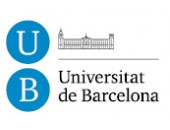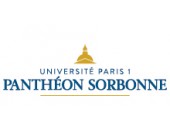Understanding European identities
An important aspect of cultural, social and political change over the past two decades has been the Europeanization of identities. This can be seen in at least two ways:
There is firstly the increasing importance of European identities in the sense of identities that involve to some degree a reference or orientation to Europe. European identity among especially young and educated people is much stronger than what is often thought. As with many identities, a European identity may co-exist alongside other identities, since individuals generally have more than one identity. Indeed, such European identities may not always recognise themselves as such, since the European dimension is only one level and interacts with other levels. The emergence of the notion of Europeans as bearers of European identity is a relatively recent phenomenon and has been much influenced by European policy making around cultural issues. There can be no doubt that Europe has become the phenomenological basis of a shift in identities away from the nation as the exclusive reference point. Mobility is a key aspect of European identities.
Secondly, European identity can be seen, not as an identity that is outside or anti-national, but as an internal transformation of national identities. In these terms, it is not a case of European versus national identities, but of the Europeanization of national identities that is significant. Thus it is the case that many national identities have found within the project of European integration the means of advancing their interests, but too of re-orienting their self-understanding. The consolidation of a European symbolic culture based on the EU has entered into the national cultures even if it is also partly external. The symbols of the EU – the blue and yellow flag, anthem, currency icons, burgundy passport covers, pink driving licences etc – have in most cases been absorbed into national cultures and are not in a significant sense the basis of collective identities.
European identity is more diluted than the concept of identity normally suggests, but it is also open to more and thus involves more interpretations. The result is that there is more, not less, contestation as to the meaning of Europe as well as greater uncertainty as to what it consists. For this reason, again, what is at work here is the internal transformation of identities through constant re-interpretation. National culture and national identities are themselves highly diverse and there are often greater internal differences within a given country than between countries. It is not the case of a coherent national identity resisting a dominant European identity any more than it is a matter of national identity being replaced by a new European identity. This is one of the more significant forms that post-national identity takes today. Rather than a supra-national identity, it is a self-understanding that has recognises the relativity and plurality of the notion of the nation.
Europe is not a fixed reference point, but a variable term whose meaning will always change in response to changing circumstances. Rather than deny the existence or possibility of a European identity, it is perhaps best found in the myriad of discourses in which Europe figures as a term of reference as well as itself a mode of discourse. In this way more and more issues are framed in the terms of Europe – both in positive and in negative senses – and thus bringing into existence not just an order of discourse but a new reality that has normative significance.
Making sense of Europe’s Cultural Heritage
One of the challenges in addressing cultural heritage resides in relating the different dimensions of memory, history, and culture more generally. Heritage is first related to the problem of memory, since it reflects the way in which different groups as well as societies see their past. However, memory is often a poor guide to the past. So the question arises as to the relation between memory and history. National constructions of memory often bear little relation to the facts of history and many such memories are deeply divided. Heritage would appear to have an evaluative dimension in that it is about how the past should be recalled by the present. This is immediately to take up a normative stance on the past.
The question of a European cultural heritage thus needs to be posed in a way that does not reduce heritage to a specific subject to which a particular form of life can be related. Instead what is needed is to understand the ways by which European societies interpret themselves, their past and their collective goals and aspirations to arriving at a view as to what the present task should be and how cultural policy making could guide the formation of a narrative that is appropriate for the present day. This challenge is perhaps the central talk of for the European cultural heritage today.
Our aim in this project is to bring some of the most important theoretical and philosophical perspectives to bear on museums, galleries, libraries as sites of public culture, and to build on developments in the late 20th century’s ‘new museology’ that incorporated postmodernist/Foucauldian, feminist, and postcolonialist critiques of cultural legitimacy into curatorship and museum practices (Karp et al., 2006; Fabiani, 2007; Rodríguez Morató, 2003). The application of recent advances in cultural and social theory will help to develop new understandings of the complexities of contemporary debates of heritage, memory and culture.
The Three General Axes: Cultural Memory, Cultural Inclusion and Cultural Creativity
On the basis of the foregoing theoretical analysis of the changed context of heritage and identities, the conceptual objectives of the project will be operationalised around a number of substantive thematic areas that will be analysed in terms of three general axes: cultural memory, cultural inclusion and cultural creativity. These are designed to research debates relating to heritage in the institutions and practices of cultural memory; how the focus on diversity and inclusion impacts on the practices of memory institutions, including on stakeholders and networks; what this reconfiguration contributes to new or post-national oriented narratives about identity and European values; and how heritage, cultural diversity and creativity relate in the context of huge cultural transformations such as the ones represented by digitization and cultural globalization. The three axes forming the basis of CulturalBase are included in the specific societal challenge ‘Europe in a changing world – inclusive, innovative and reflective societies’.
Our research will proceed in two steps: first, an overview of six large thematic fields covering the whole topic of Cultural Heritage and European Identities in order to identify and debate main research issues and policy programmes within it; and second, a deep review of 12 more specific thematic areas selected as a result of the previous process of analysis.








